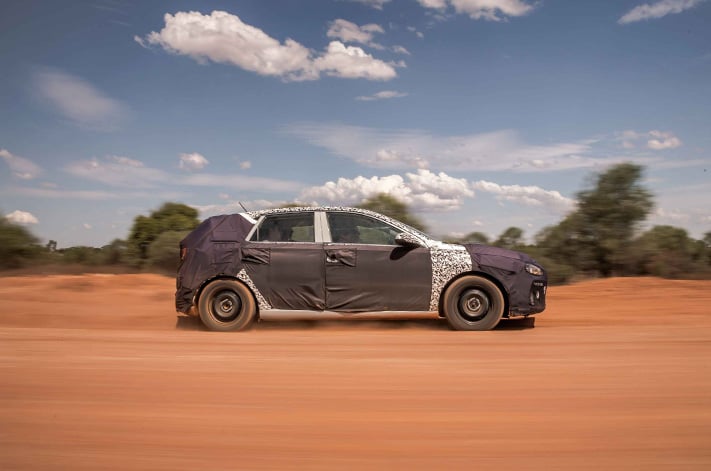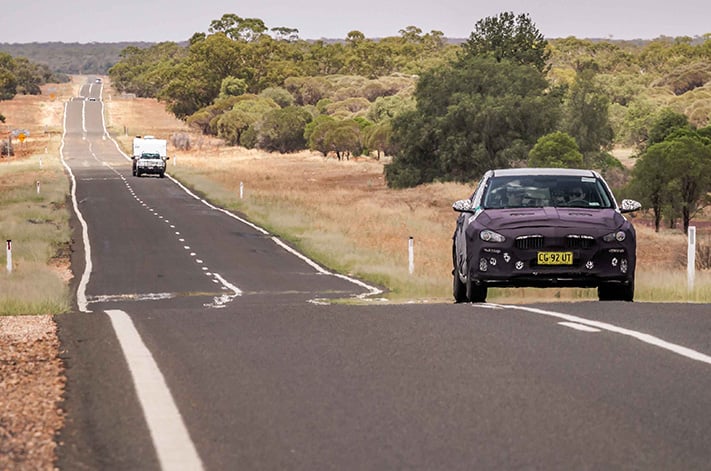
During the course of a new vehicle development program, prototype models visit many regions of the world, sometimes including Australia.
In the depths of the northern hemisphere winter, Sweden is often used as a location to test cars on well-maintained roads but in some savage cold, windy and icy conditions, while at the other end of the year, the United Arab Emirates can offer some of the hottest and driest conditions on earth, as well as the added complication of dust.
The research and development conducted in hot and dry, cold and wet regions can benefit a vehicle’s durability in virtually any global region that endures a similar climate, but there are some regional differences that are more specific.

Drive from Melbourne to Darwin and, in addition to the many different types of weather, you are likely to encounter just about every type of road surface as well, including well-maintained sealed asphalt roads, deteriorating concrete and tarmac, unsealed hard-pack and corrugated country trails.
That infinite variation has prompted some car companies to develop a specific suspension tune explicitly for Australia. While Ford, Holden and Toyota have formulated chassis set ups for a number of vehicles over the years, South Korean brands Kia and Hyundai tailor every model sold on red dirt to ride better on it.
Hyundai product engineer Hee-Loong explained to WhichCar the challenges involved in the process and why it is so important for its range of cars, starting with the nature of Australian motoring.
“There is no such thing as a German road or a European tune or an Australian tune,” he said. “No matter where you go, a road is a road. The gravity in Europe is the same in Australia and a 50mm bump is a 50mm bump.
But while Loong said that the same physics apply to a chassis tune anywhere in the world, a number of local features make a big difference and used the example of the Blue Mountains roads in New South Wales, where large trucks generate unique waves in the surface as they round bends.
“You have to have a car that is able to cope with the force produced by those roads,” he said and listed a number of other conditions such as loose asphalt and degraded surfaces.
While European cars are often engineered with a firmer ride that works well with generally smooth surfaces, Loong said that vehicles work better Down Under if they can cope with all conditions.
“Everyone assumes the ideal condition is the autobahn or the Nurburgring. If you tune to that condition everyone will say your car is damn good but come to Australia, oops it’s different. You’ll never find mid-corner pot hole on the Nurburgring.

“There is no such thing as tuned for Australia, we say tuned for all conditions.”
In addition to the changing and varied surfaces found around such a large nation, Australia driving habits are also somewhat unique and require chassis tuning to match Aussie drivers.
According to Loong, a visiting Korean development team observed how local drivers tended to “hover around” the 100km/h speed limit regardless of the road course, and that they attempted to accelerate to the limit as quickly as possible.
These factors all contribute to crafting the perfect balance, says Loong.
“When we tune a vehicle suspension, the first thing we put for Australian priority is body control, then ride comfort. Australians want to be in control of the vehicle because they never want to slow down below the speed limit.”
With this valuable information in mind, Loong and his team then create a virtual prototype for a new car using “simulations, estimations and calculations” before a nuts-and-bolts vehicle hits the road.
Thanks to an intimate knowledge of Australian conditions, Loong says the virtual work rarely needs much tinkering in real-world testing with the trial of different components, but a huge range of springs, stabiliser bars and dampers are at the team’s disposal for development projects.
Rather than a stab-in-the-dark process of fitting a range of parts, Loong said the art of tuning a suspension system was about finding a correct recipe of all the variables rather than trial and error.
It’s like serving you a dish and saying “if you want it more tasty I’ll put in more salt for you”. You need the right balance of everything. It’s a complete package.




